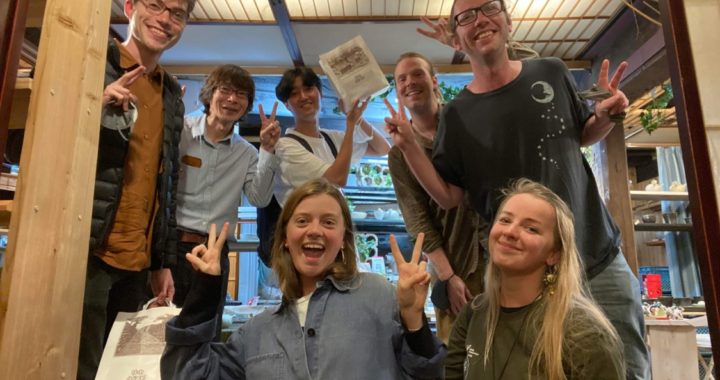Justin, Patrick, Katrina, Hannah, Alex, and Satomi-san here! During our internship, we went on several trips and tea-related festivals and events, both individually and as a group. Being located in the Kansai region, there are countless possibilities for discovering many different places in Japan. In this blog, we will tell you a little bit about these trips since they might inspire future interns and you, dear reader, who is following Obubu’s story! :)
Higashiomi
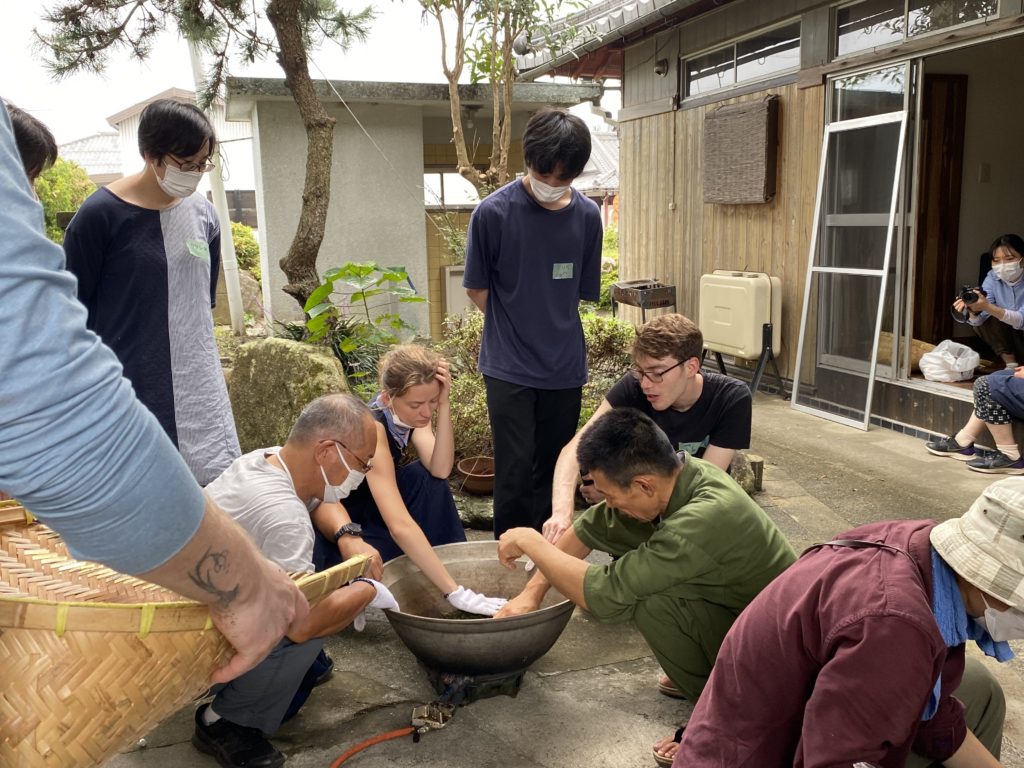
The first week of our internship was rich in experiences! We got to go with Matsu-san to a yearly tea-picking and hand-rolling event in Higashiomi. Before the event, we visited the sustainable community initiative “Nanohana Project” factory, which cultivates canola oil, as well as recycles oil to refine it into biodiesel fuel on which the residents operate the Chokotto Bus “Eco-Tomo”.
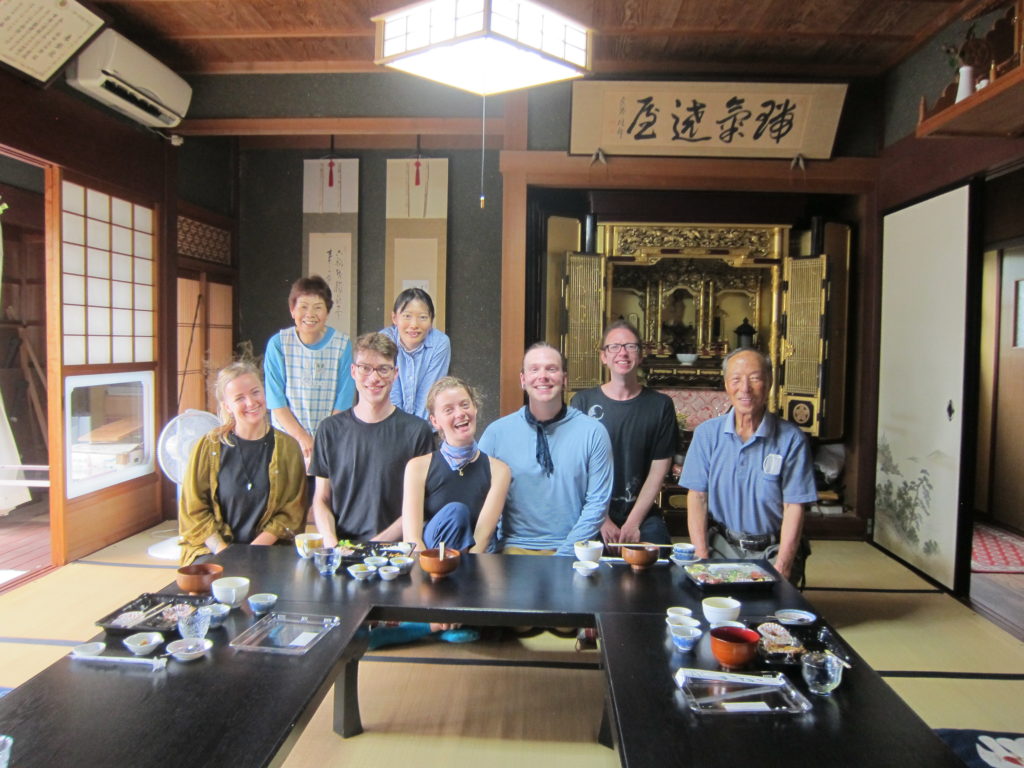
It was raining a lot that day, therefore, the tea leaves were picked before we arrived. The ex-mayor is very passionate about tea, therefore, he supports this initiative and we had a lovely lunch at his house. Then, Matsu-san taught us and all of the guests how to make Kamairicha: we pan-fried the tea and rolled it on bamboo trays for several rounds, and dried it until it was ready to drink. After the event, we went to see Lake Biwako and had some ice cream together.
Shigaraki
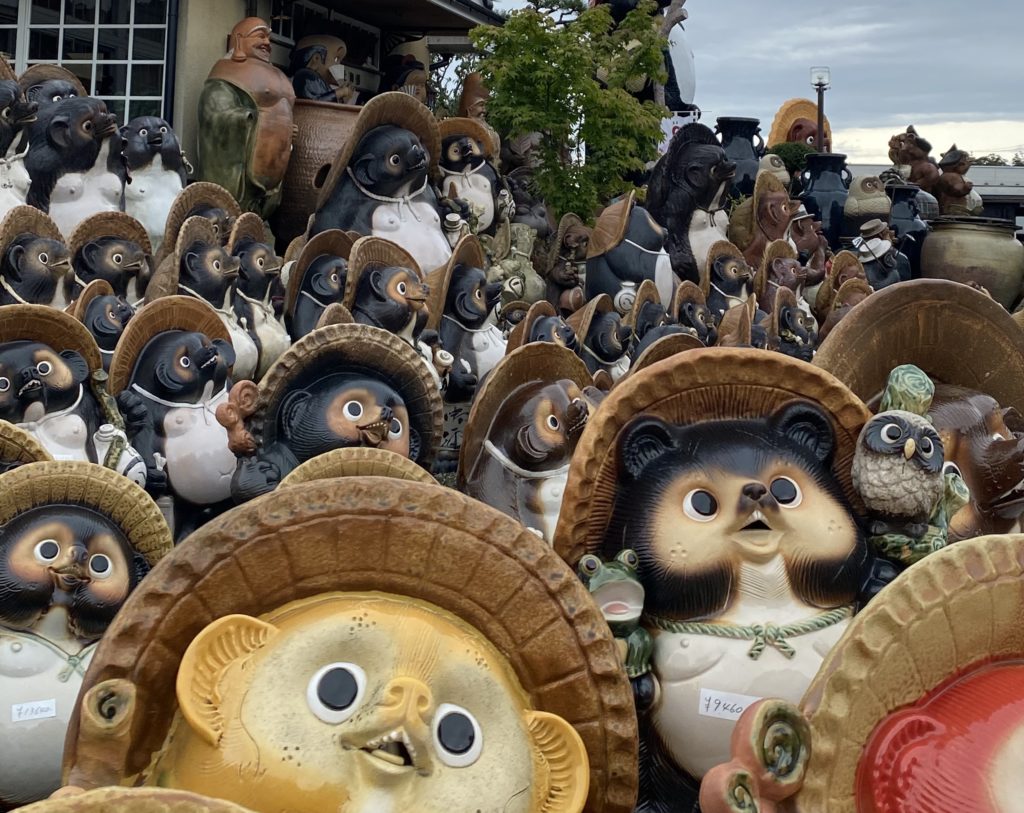
Shigaraki is located about 30 minutes by car from Wazuka where we live. It is such a charming town that most interns have visited more than once, not only for the tea utensils but also for the kind people they meet in Shigaraki. Shigaraki ware is a pottery with a long history and culture that has been produced since the Kamakura period and is famous as one of the six oldest kilns in Japan. It is also synonymous with tanuki figurines, and you are bound to come across some unique ones here!
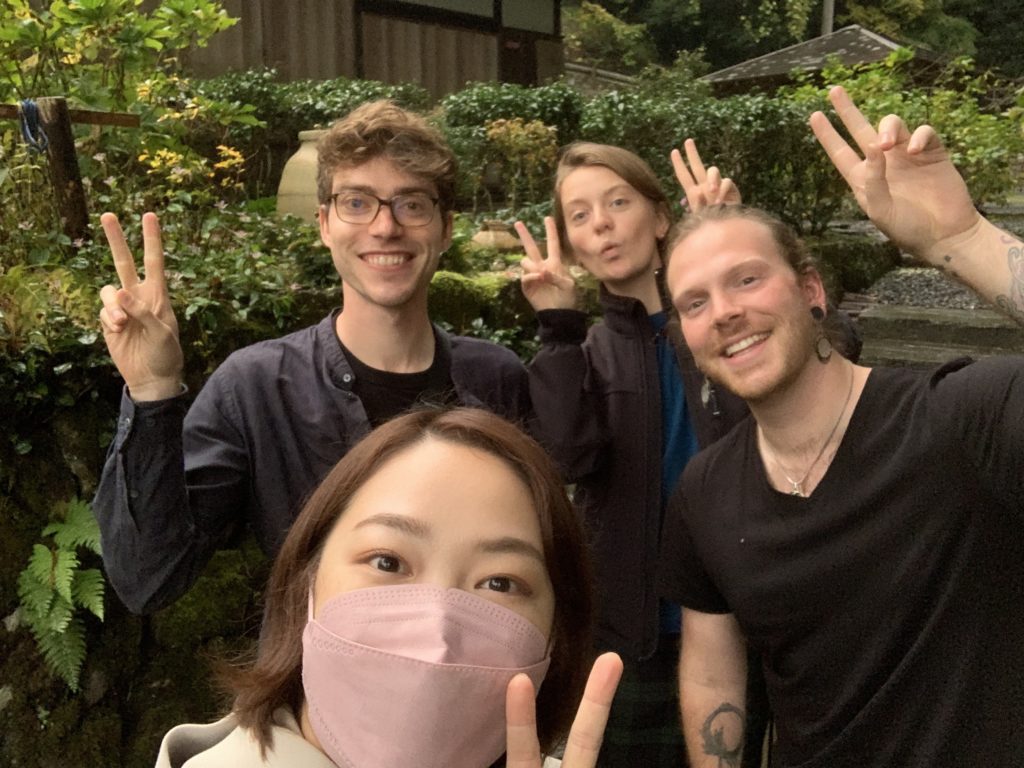
If you have a craving for something sweet, there is a place where you can enjoy soft ice cream made from Asamiya tea, which will satisfy both your heart and stomach. Not to forget also the unforgettable experience in Miho Museum: the architectural design is integrated into the natural surroundings within the mountainous landscape of Shiga prefecture. The museum exhibits art from ancient civilizations including Japan and the ancient orient, Egypt, Rome, Greece, and America. Photo: Ujitawara.
Wakayama
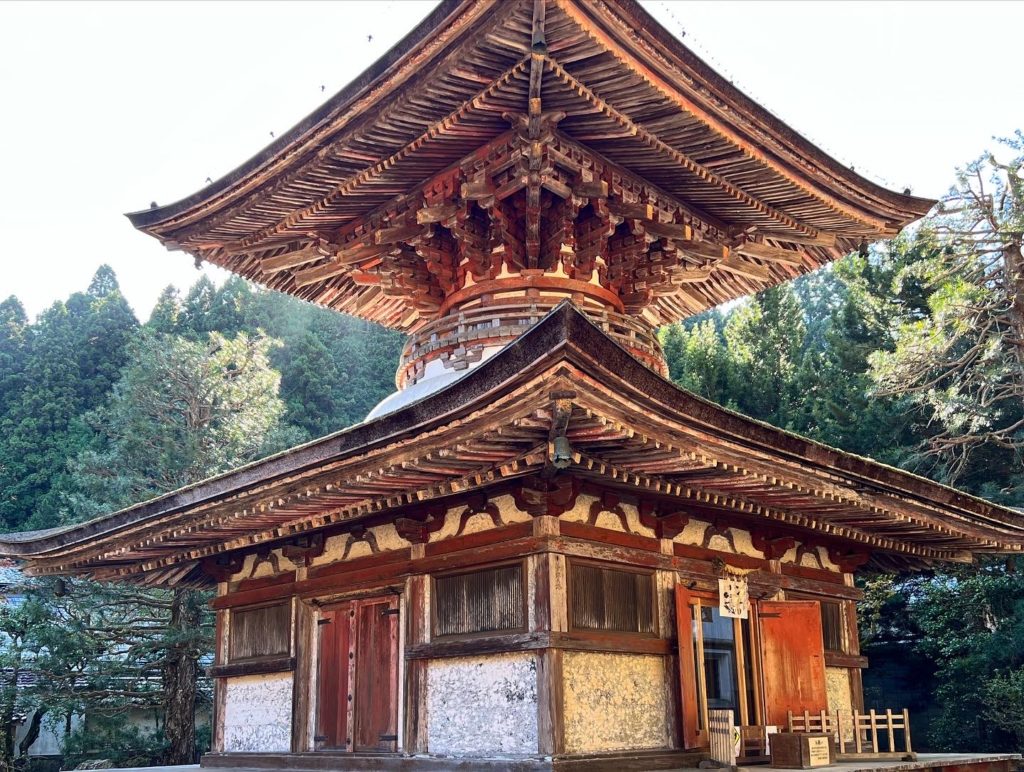
Current intern Alex Dubovoy traveled with former intern Alex Billingsley to Koyasan, a sacred mountain in Wakayama Prefecture. First settled by the Buddhist monk Kukai (Kobo Daishi) in 819, Koyasan has been a pilgrimage site for over a thousand years and is the headquarters of Shingon Buddhism. Shingon is a form of Vajrayana, or esoteric, Buddhism, which means that it is considerably different from other types of Japanese Buddhism and bears certain resemblances to Tibetan Buddhism. Though Shingon has all sorts of interesting arcane and secret practices (read: ghosts, exorcism, fire), Koyasan is also a welcoming place for visitors. It is particularly known for the tradition of shukubou or guest lodging. So, both Alexes stayed at Muryokoin, a beautiful temple, and participated in temple services at 6 AM (yes, fire, lots of fire 🔥).
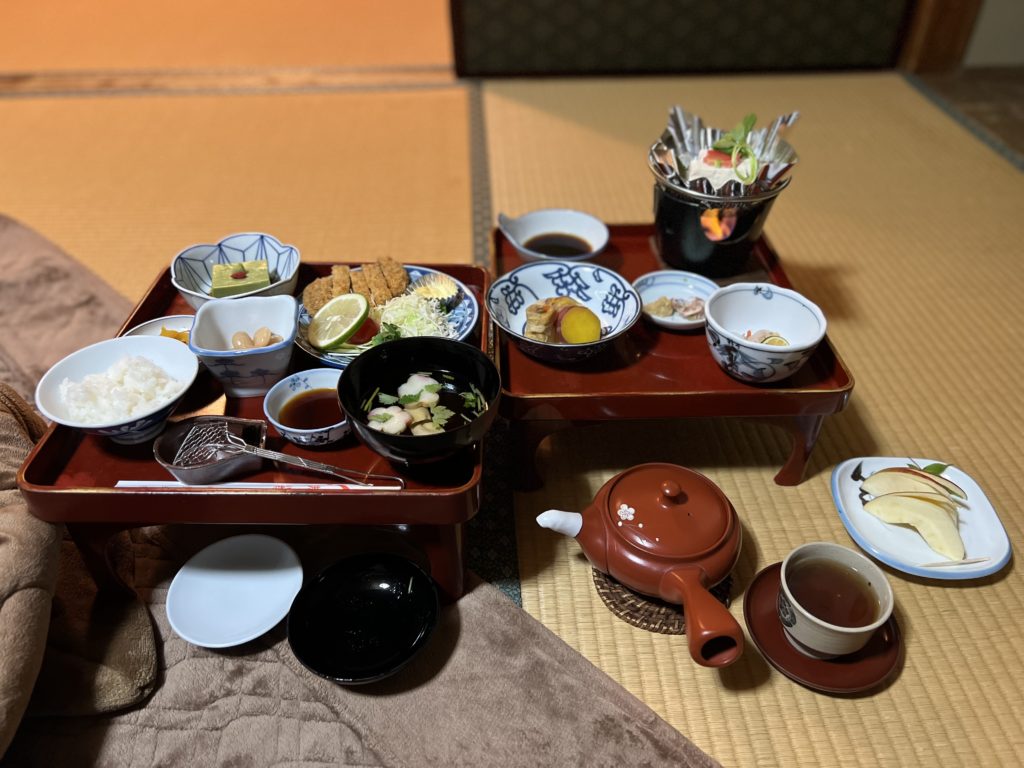
They were treated to lovely shojin ryori meals, the Japanese vegetarian cuisine often meticulously served at temples. They sampled local specialties such as koyadofu (freeze-dried tofu), gomadofu (sesame tofu), and…well, tofu. Both Alexes are also enthusiastic goshuin gatherers. When you visit temples in Japan, the temple staff will sometimes offer to write calligraphic inscriptions and issue a red stamp in a special notebook (called a goshuinchou).

Together, the Alexes must have gathered nearly 30 stamps! Their visit wasn’t complete without a nighttime wander through the local graveyard, where Kobo Daishi is believed to have remained alive in constant mediation since 835 👻 Oh, also it was Halloween weekend 🎃
Nara
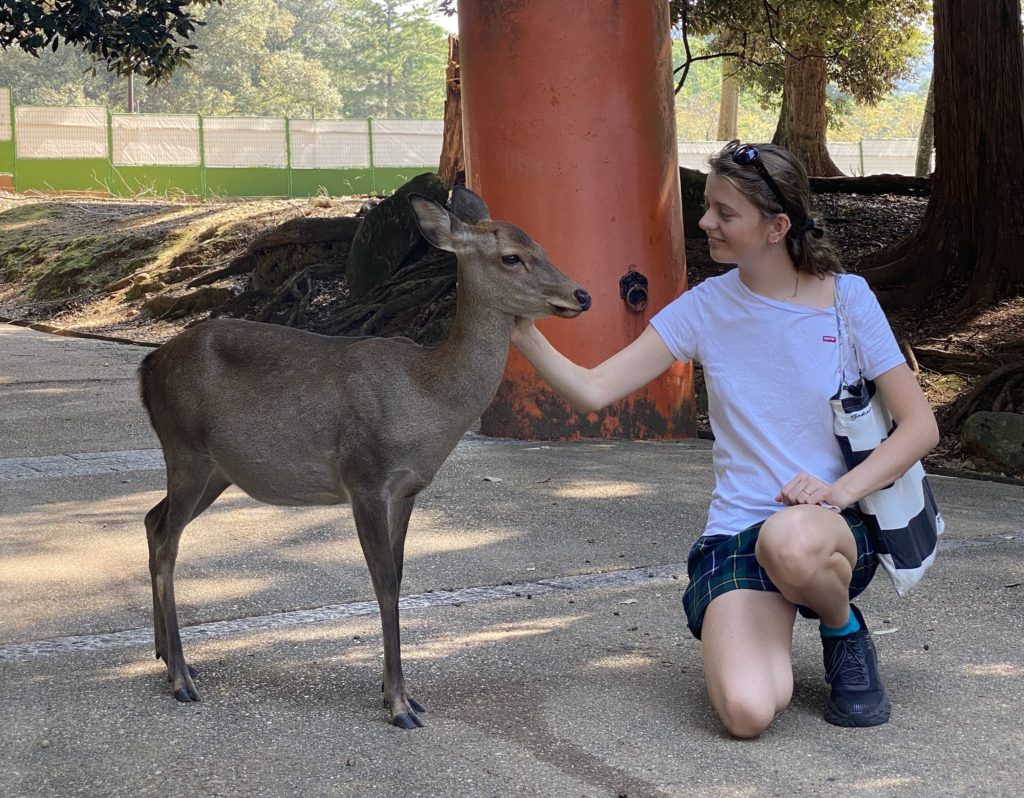
Deer, deer, and more deer! Beautiful temples and vintage stores! AND, an exhibition that made our ‘deer’ Mushi Justin (a reference to his intern project ‘Mushi Mokuyoubi’, i.e., ‘Insect Thursdays’) very happy: Naramachi Dung Beetle Gallery. Shigaraki, Nara, and Kyoto are the most accessible and nearby destinations for weekend travel, therefore, the interns went there often. We recommend going to Nara Park, Todaiji Temple, Kofukuji Temple, Isuien Japanese Garden, and Naramachi Shopping District. Fun fact: Patrick ran from Obubu’s house to Nara station! (half marathon)
Kyoto

If Nara made ‘Mushi’ Justin happy, then Dobutsu Justin (referencing his other project ‘Dobutsu Douyobi’, or ‘Animal Saturdays’) was just as pleased in Kyoto: Arashiyama Monkey Park and the Bamboo Grove! Our lovely temple enthusiasts Katrina and both Alexes were also excited to fill their goshuinchou to their heart’s content when doing the Philosopher’s Walk and literally entering every single temple and shrine for a brief prayer.
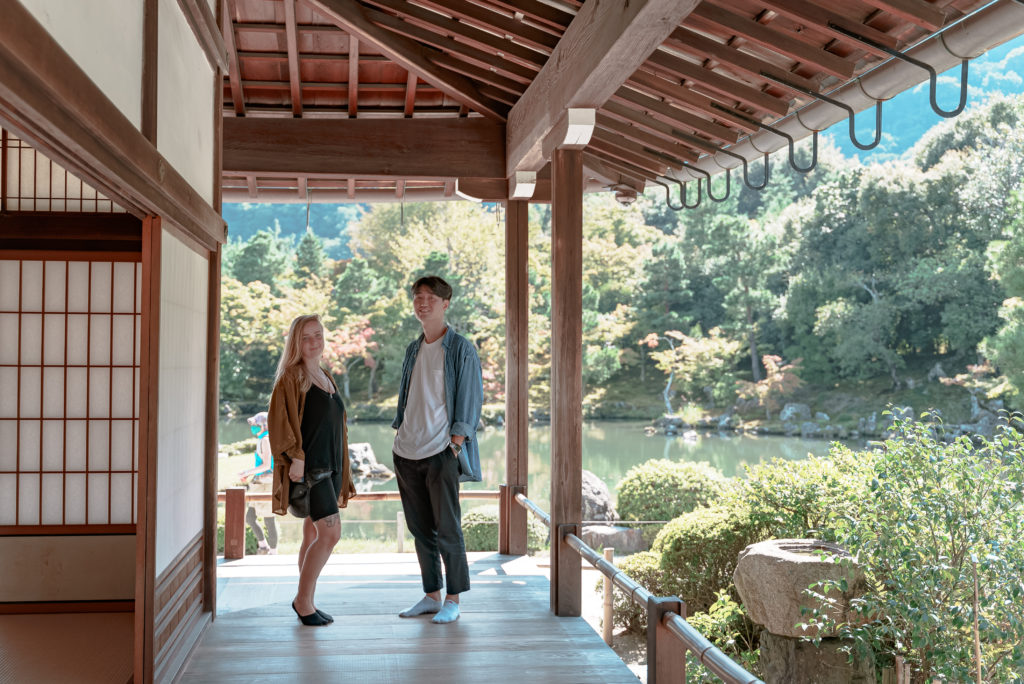
This photo is from Tenryūji Temple, one of Woo Jae and Katrina’s ventures, where the dragon painted on the ceiling in one of the temple’s halls serves as an optical illusion: the dragon will stare at you no matter where you stand in the room.
Fukushima & Tokyo
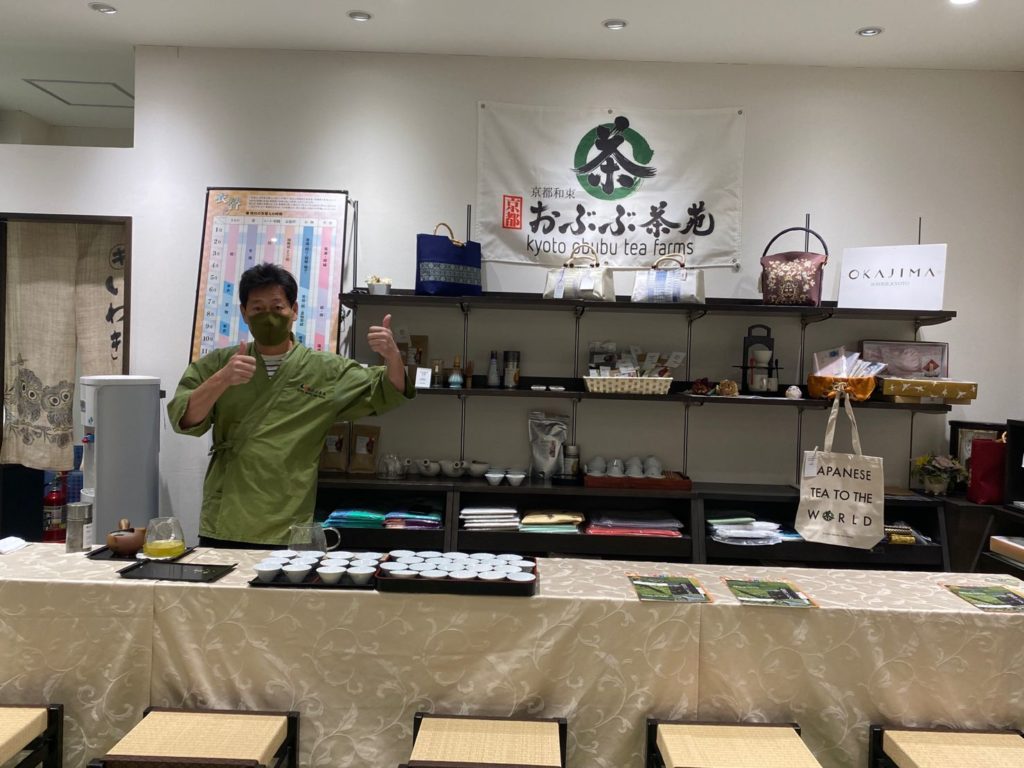
Intern Katrina and Hiro-san participated in the annual 5-day business trip to Fukushima city for a kimono sales event at the “Kimono Iwaki” main store. They brewed our beloved Wazuka teas for the staff and customers, the main teas being Obubu’s Hojicha, Kabuse Sencha, Genmai, and Sakura Sencha. Katrina ended up chatting with kimono craftsmen and found out that one of the masters makes Sengoku era style kimonos, and one of them was dyed with tea leaves! Iwaki-san was very happy with the tea and our positive energy, therefore, he generously gifted Katrina a yukata and the accessories that come with it. Thank you! The hard work was rewarded with 2 days of holiday, therefore, on the way back to Wazuka, Katrina spent that time in Tokyo, which resulted in meaningful and inspiring encounters that continue to fuel her dreams. She got to meet Tengyo Kura, a Japanese storytelling vagabond; and Jeff Fuchs, a Canadian tea explorer who completed the Ancient Tea Horse Road. Check out their inspiring work and writings! Tea connects people (better than Nokia, no offense).
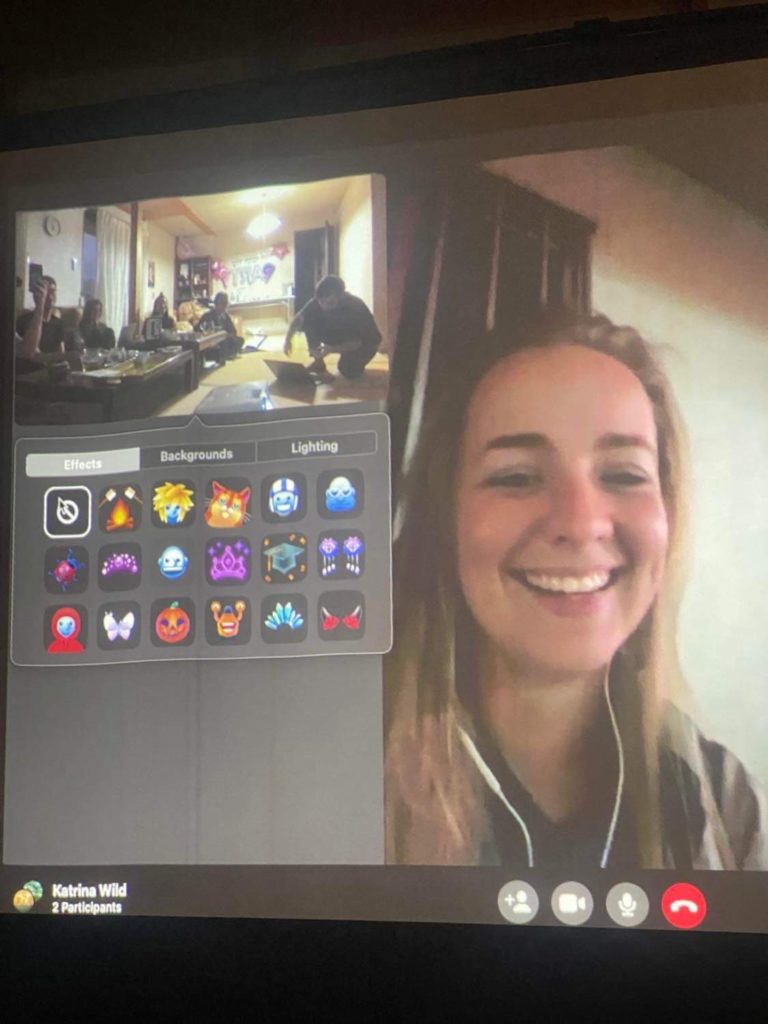
We also had a remote weekly intern meeting, when Katrina was running hectically around Sumida city in desperate search for WiFi. After successfully finding it on a street nearby Tokyo Skytree, George and Woo Jae called (“why is my face on the projector!?”). Improvise. Adapt. Overcome.
Urasenke Sado: Wazuka
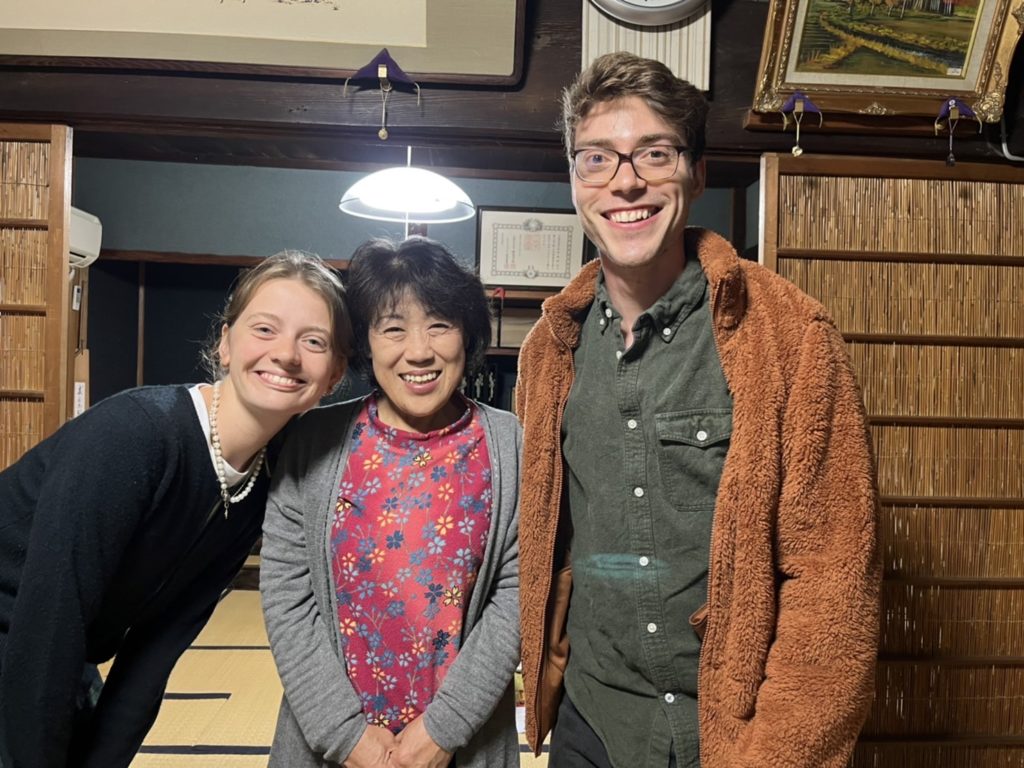
Once upon a time, Matsu-san kindly invited interns to join his tea ceremony lesson taught by Nakai-sensei (Urasenke schooled tea master). Alex, Patrick, and Hannah instantly agreed and continued their studies during the internship, later on, joined by Satomi-san and Katrina. The previous intern Moe-chan also is one of Nakai-sensei’s students, therefore, we highly recommend her school! George has also done a few lessons! (we are lucky to have Alex and Matsu-san as interpreters who kindly translate the lesson, therefore, heads up that you might need some Japanese language skills by your side). She creates a classroom, where it’s okay to make mistakes in order to learn. We often have a good laugh, and she is such a gentle and kind person (Nakai-sensei also makes delicious wagashi sweets!).
Shizuoka
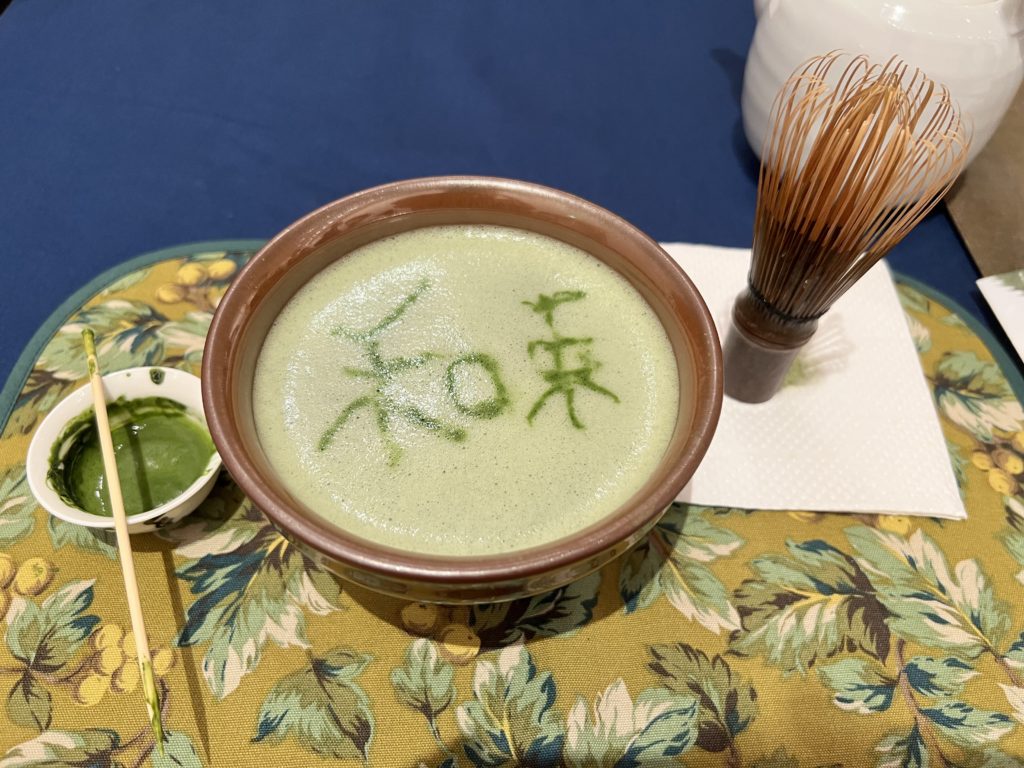
We were lucky enough to also visit the World O-Cha Festival, a major tea event that takes place every three years in Shizuoka city. It was delightful to get to meet other Japanese tea producers and individuals that are passionate about tea. For example, we chatted for a while with Bret Mayer who introduced us to the Shizuoka Tea Rolling Preservation Society and their lovely handmade teas. Apart from drinking tons of magical teas, one of the most memorable things within this festival was the Song Dynasty (960-1279) matcha preparation workshop since the powdered tea that we know as matcha was brought to Japan by Zen master Eisai during Song Dynasty, i.e., Kamakura period. The interns got to learn how “dian cha” (matcha) was served: firstly, a small amount of boiling water is poured (this action is called “dian”) into a Tenmoku chawan to make a “tea paste”. The small pours are followed with vigorous 1000 whisks (approximately, obviously) and this process is repeated 7 times. However, in the last two, the whisking is way more gentle to make the foam as frothy as possible without big bubbles. And lastly, we draw with koicha (a tiny amount of tea paste that is prepared separately), which in Chinese is called “chabaixi” – ancient art form of calligraphy and painting on tea froth (in the picture, Alex’s kanji for Wazuka). After the festival, we stumbled upon an izakaya where the owner’s birthday was celebrated, and an ex-mayor of Shizuoka city ended up giving us a lovely lecture about the history of Japanese tea and its significance in Shizuoka. Yet, the adventures did not end there.
Izu
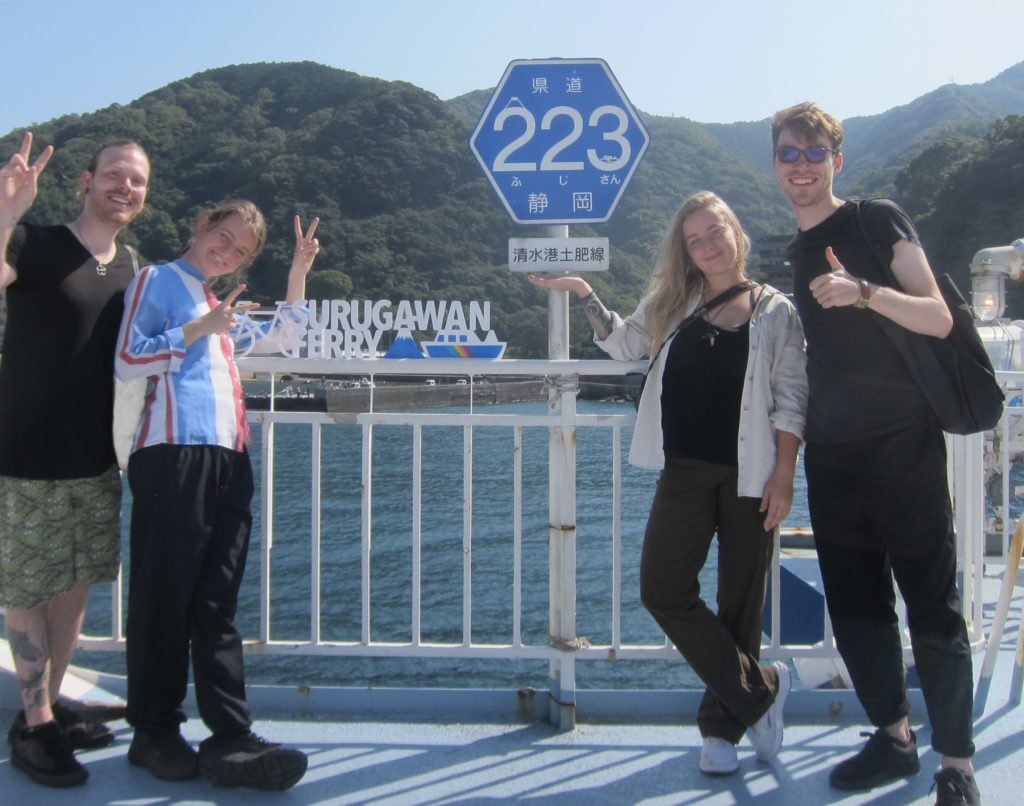
After trying the best teas from all around Shizuoka at the World Tea Expo, a few of the interns went on a spontaneous adventure. While trying to navigate the city, we took an unexpected turn that led us to Route 223, which can be read as “Fujisan” in Japanese. Crossing Shizuoka Prefecture Road Route 223 is a rare experience as it is traveled by ferry, across Suruga Bay, connecting Shimizu Port and Nishi-Izu Toi Port in just over an hour. This short cruise was an amazing opportunity for us to relax and enjoy views of Mt. Fuji. While exploring the beautiful coastline of Izu Honto, it was easy to see why this is recognized as one of the most visually stunning places in Japan. Along the way, we took a few breaks at incredible and memorable locations. Among our favorites were: Sawada Park open-air onsen in Nishi Izu, Inashimo Shrine, Matsuzaki Town (another of Japan’s 100 Most Beautiful Villages), and Matsuzaki Beach, where the day was made complete by an unforgettable sunset.
Tokoname
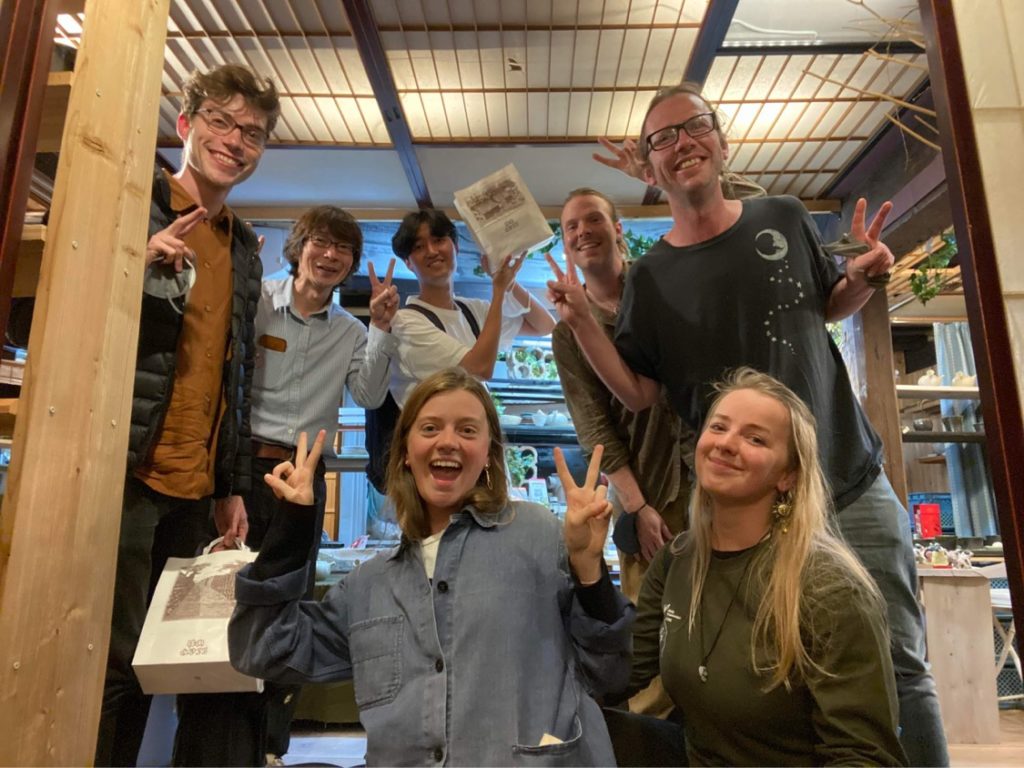
One weekend in the fall, we were invited to a festival in Tokoname, also one of the six ancient kilns of Japan. Naturally, we had to go. Takayuki-san of Issei-Touen Tokoname (@issei_tokoname) was our host for the day and he graciously took us around Tokoname. The day started with a wonderful sencha and gyokuro brewing demonstration where we went to try different tea sets from different local potters. Afterward, Takayuki-san introduced us to many different potters (including one that made dinosaur teaware! [IG: @takawogama] ) and galleries exhibiting beautiful pieces of Tokoname teaware.

We saw two different pottery demonstrations, one involving throwing a kyusu on a traditional wheel and the other, creating teapots without a wheel. Finishing off the day we ate dinner with our wonderful host Takayuki-san. Also, we got to pet cat celebrity Marron-chan (@kamasaka_marron) and made off with half of Tokoname’s teaware, so great day overall.
Fuji
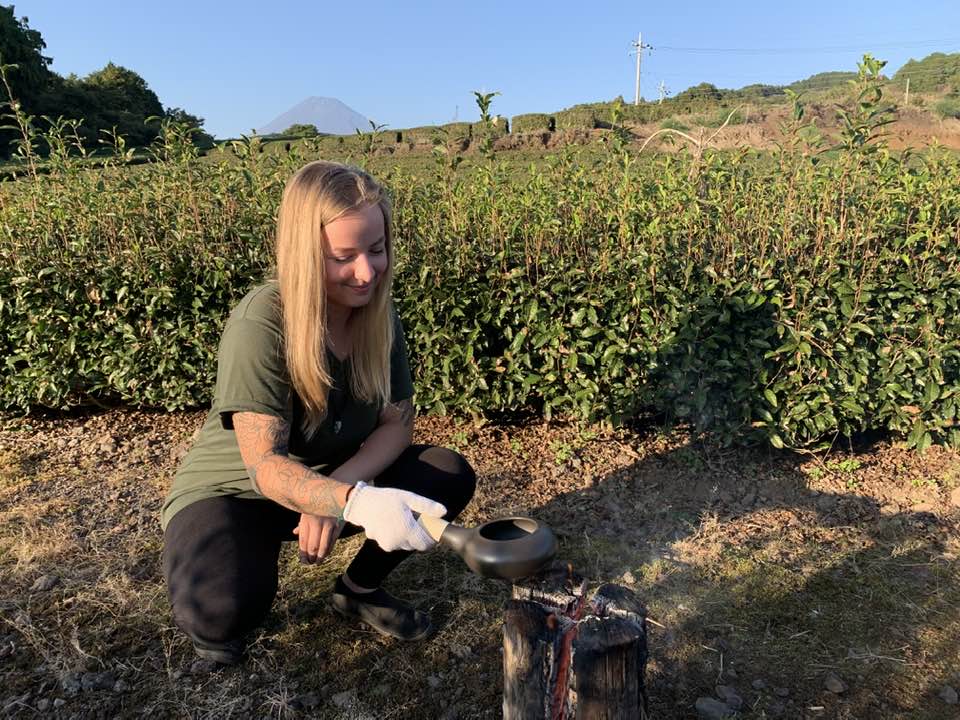
Tea connects people, yet again. Katrina got invited to visit Yamada-san (Chakoubou Yamadaseicha) and Yamaguchi-san who warmly welcomed her to Fuji City because of their recent trip to Latvia.
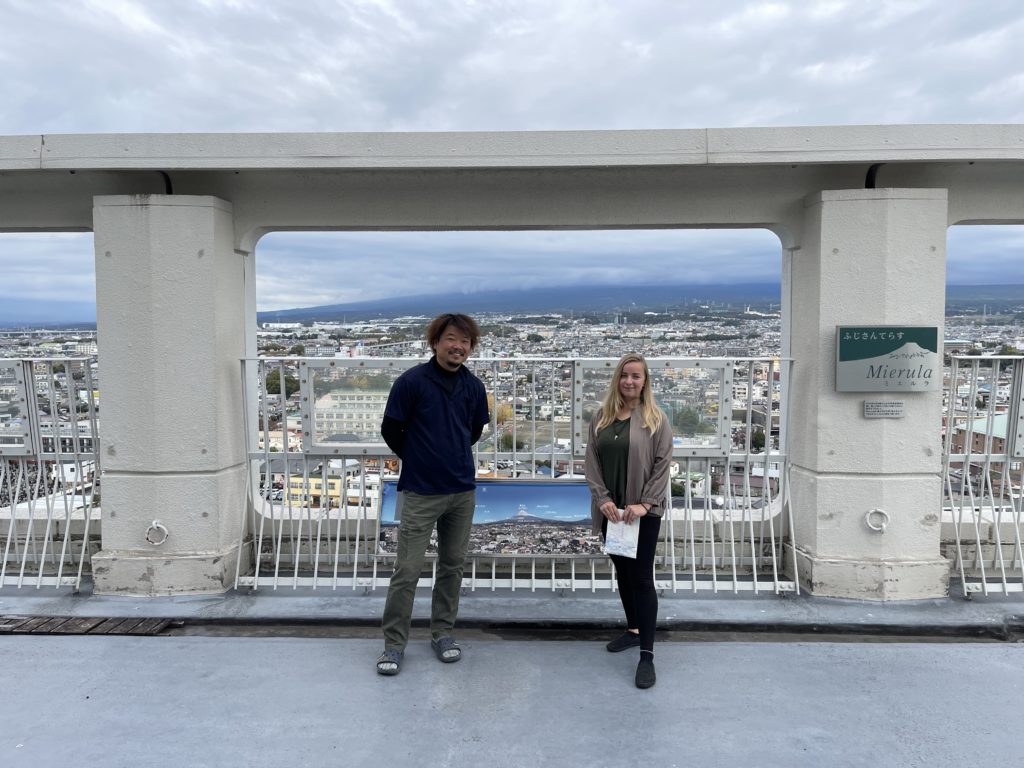
Together they roasted kukicha in a houroku pan on a Swedish torch in a tea plantation next to Fujisan alongside a wonderful BBQ and lots of tea, had a brief sencha factory tour, and visited Mt. Fuji World Heritage Centre and Fujisan Hongu Sengen Shrine, as well as had a trip to the Izu Peninsula with its spectacular volcanic coasts.
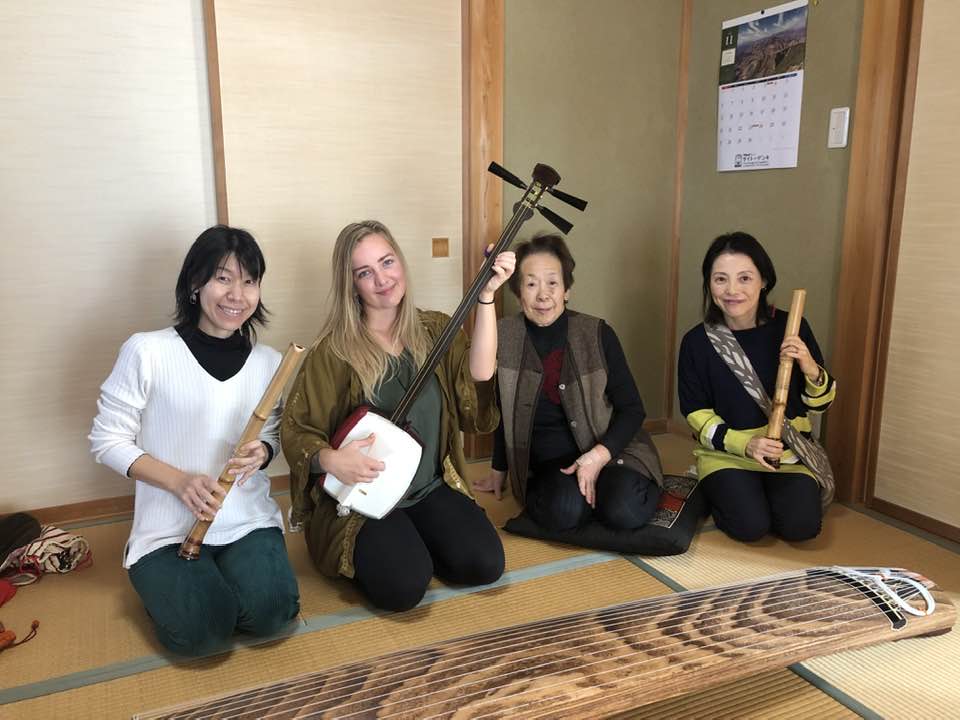
The next morning, Yuki Takahashi and her family kindly welcomed Katrina for a short shamisen, shakuhachi, and koto lesson. And finally, a brief official meeting at the Fuji City Hall where tea and the future of friendship between Japan and Latvia were discussed. We are looking forward to welcoming Yamada-san to Wazuka and Obubu soon!
Uji
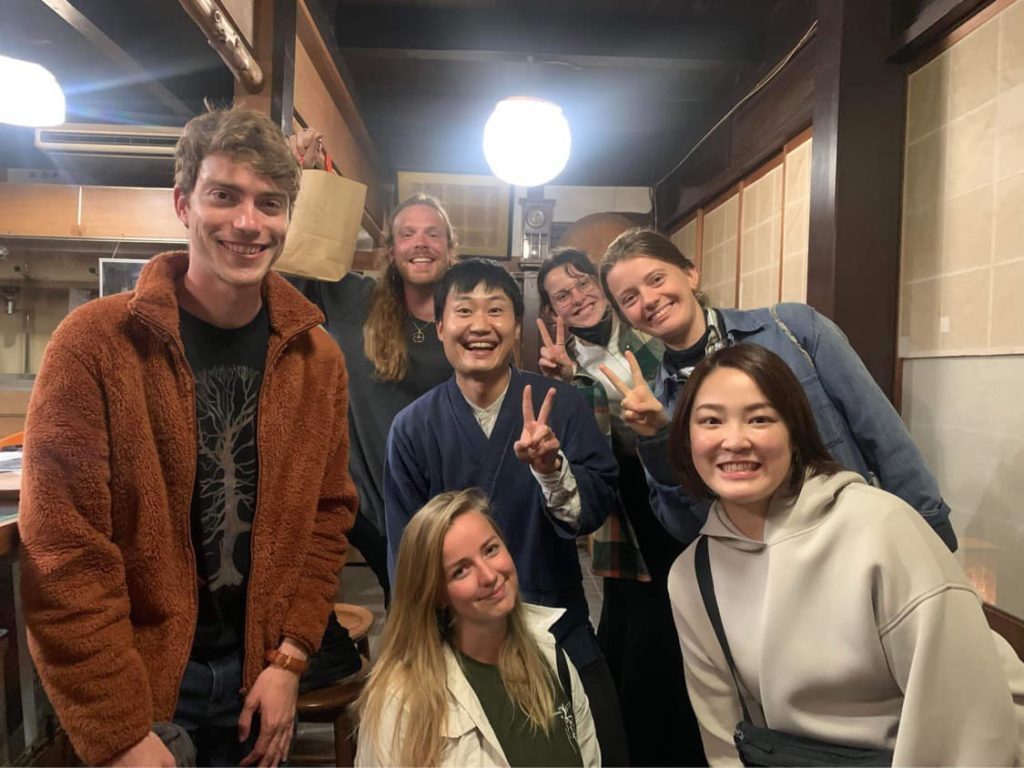
Uji is the epicenter of tea! It’s where the first tea bush was planted in 1190 when the monk Eisai brought it from China. Tea is everywhere here, in all different kinds of shapes: tea and pottery shops (such as Asahi-yaki), matcha ice cream, matcha ramen, matcha takoyaki, matcha gyoza, and so on. All of us attended the Uji Tea Festival, which hosted several tea events and stalls by various tea producers and local craftsmen. Hannah and Katrina also enjoyed the exhibition at the Tea Museum in Uji. The interns also visited Akky-san’s friend Yamamoto Jinjirou (@yamamotojinjirou) whose family has been growing and producing tea for 6 generations. They specialize in hand-picked tencha and matcha, which are produced in the oldest tencha drying oven in Japan. They grow only Asahi and Samidori cultivars, which are picked only once per year in spring. The shading practices also include the preservation of tradition: Yamamoto-san grows rice to cover the tea bushes with rice straw instead of the black synthetic fiber covers. We had a great time together and everyone went home in a car filled with bags of all kinds of different tea-related goods!
And. Home, sweet home.
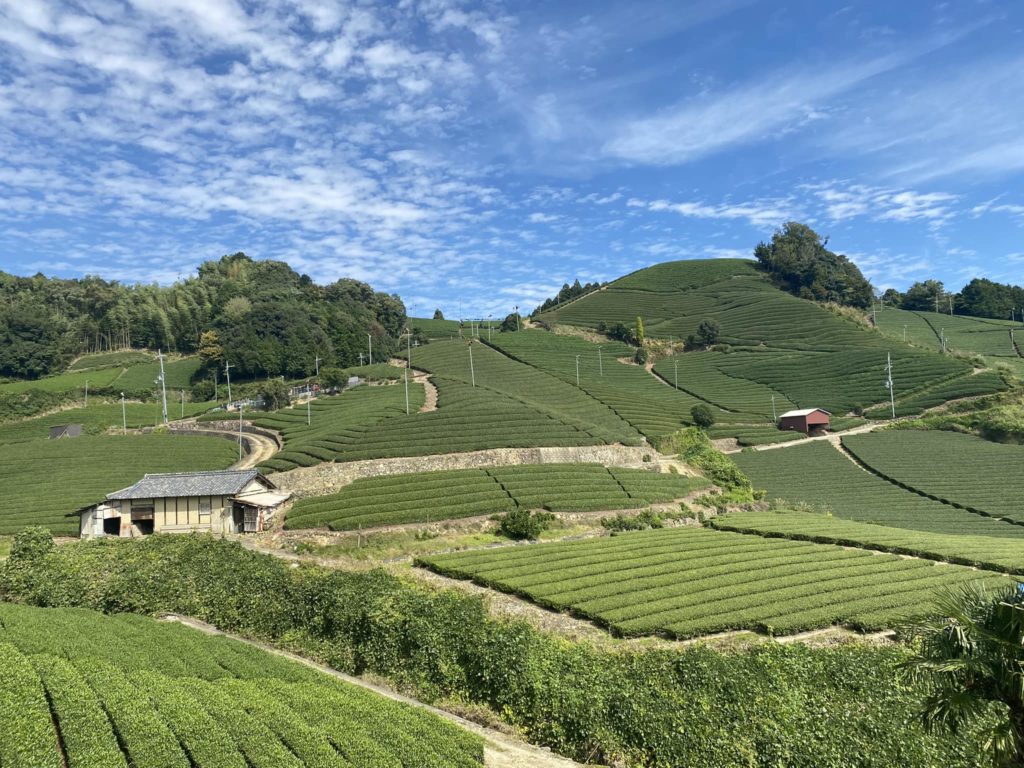
Honestly, the staff members were surprised by how much energy we had for traveling after all those crazy harvests and processing evenings! We are grateful to Obubu and this internship for these opportunities because it has taught us first-hand about tea A LOT, as well as made this kind of exploration very accessible. Interns are very lucky to have the resources to visit so many beautiful places in Japan during their days off. Thank you Obubu, thank you Japan! We are looking forward to witnessing the tea adventures of future interns and coming back since we made so many wonderful friends here! :)

